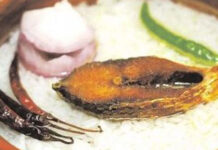
Bangladesh just had one of its worst days in the international press after the British tabloid Daily Mirror claimed that the rescue operation of the “miracle girl” Reshma, who reportedly survived under the rubble of a collapsed garments factory for 17 days, was a hoax. Following this publication, The Herald Sun (Australian), The Daily Mail (British), New York Daily News (U.S.), and MSN News (U.S.) have also claimed that the Bangladesh authorities staged the Reshma hoax to subdue popular outcry over the factory collapse back in May, where at least 1,100 workers have died.
The timing couldn’t have been worse
Just three days prior to the Daily Mirror news, the US revoked Bangladesh’s Generalized System of Preference (”GSP”) status. GSP is a tariff based incentive for foreign exporters to the US.
Some experts in Bangladesh have claimed that the removal of GSP will not directly affect Bangladesh’s multi-billion-dollar clothing export to the US, since exported garments are not eligible for duty cuts under GSP. However, the impact of the US action may be felt in other major export destinations, if any other governments or corporations follow the US and contemplate withdrawal of tariff incentives or future orders.
Currently, there is active bickering in Bangladesh whether the opposition leader Begum Khaleda Zia’s article in a lesser known US newspaper named The Washington Times had played any role in US’ revocation of the GSP. After months of the article’s original publication, Khaleda Zia has very recently disowned it simply by saying “wasn’t me”. Conspiracy theorists have blamed not only the opposition leader, but also Dr. Muhammad Yunus, with all his ties to the US policymakers, for the country’s GSP setback.
However, the most likely architects of the GSP revocation are not politicians from Bangladesh but certain media outlets and the left-leaning labour rights groups based in the United States. These groups are against export of the US manufacturing jobs to lower cost destinations like Bangladesh.
Therefore, when disasters like Tazreen fashion (Nov 2012 fire incident, 117 dead) and Rana Plaza happened in Bangladesh within a short span of time, these labour groups finally gathered the horrific photographs and death tolls they needed to attract the attention of consumers and policymakers in the US. Unfortunately for Bangladesh, the Reshma scandal broke out just three days after the removal of Bangladesh’s GSP status. Now if other countries want to follow the US and conduct hearings on Bangladesh, this story of hoax may only add to the laundry list of negativity.
Daily Amar Desh still pulling punches
The detailed investigative report on the Reshma scandal that caused so much outcries in the international media first appeared in Daily Amar Desh, the staunchly anti-government newspaper in Bangladesh. Mahmudur Rahman, the editor is no darling of the current government, and is still in jail. The newspaper is barred from producing print circulations and maintains an economically painful web-only presence. Against all the odds, the Daily Amar Desh is still pulling some mighty punches against the current government, as evidenced by the Reshma news story.
Point to note here is that the Daily Mirror did not just translate or re-use Amar Desh’s original article. It had sent its own investigative team to Bangladesh to verify the authenticity of Amar Desh’s supporting documents and other evidences on the Reshma scandal. It is perhaps safe to assume that all those verifications passed; otherwise several international dailies would not have thrown their weights behind Daily Amar Desh’s investigative article.
Reputation of government institutions
Various local and international media have criticized the government’s handling of the Savar disaster from the beginning. Corruption in building permit process, failure of inspection, absence of proper equipment at the beginning of the rescue operation, reliance on untrained volunteers, and shortage of disaster supplies were all valid criticisms bestowed by both supporters and opponents of the current government. The fact that the owner of the collapsed building was a ruling party honcho did not help.
CNN’s Christiane Amanpour in her globally televised interview of our honorable Prime Minister Sheikh Hasina alluded that the Bangladesh government was somewhat negligent in handling the Savar Tragedy because the owner is the “Head of” the ruling party’s student wing. The statement is not factually correct, since Mr. Rana is only a local leader, not a central one. However, the Honorable Prime Minister’s less than adequate handling of the aggressive Amanpour throughout that interview did not help dispelling all the doubts that the US audience had as regards Bangladesh’s garments industry.
Several of the international news outlets are running news stories showing pictures of Bangladesh Army personnel with Reshma in press briefings. Several of these international outlets have noted that they contacted the Bangladesh army spokespersons on the Reshma scandal, but failed to gather meaningful answers beyond “No Comments”. It is imperative that the relevant government officials and the patriotic armed forces of Bangladesh take necessary media actions to successfully prove that the Reshma rescue was not a hoax, if that is indeed the case. Bangladesh’s reputation is on the line here, and no one should expect saying “no comments” is going to help. ISPR did publish a rejoinder to the Daily Mirror, however, the rejoinder should have been more direct with stronger arguments against some of the key questions highlighted by the international and local press regarding the Reshma rescue.
The garments industry is the bread-winner for millions of Bangladeshis and the country as a whole. The fact that a disaster of Rana Plaza’s proportion have happened is already causing havoc to the sector. Now that the international media is claiming that Bangladesh authorities can stage hoaxes to fool the world may well be a bigger disaster for the garments industry’s image, which would be difficult if not impossible to remedy.









